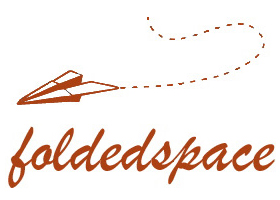Joel and Aimee and Kris and I enjoyed a very Senior experience yesterday. We dined at Top-O-Hill Restaurant, the local greasy spoon, and then we ventured to the Canby Adult Center for a rousing evening of BINGO. We were like a siphon on the poor oldsters’ winnings. We weren’t the youngest of the thirty-seven players, but we were close to it. Amy Ratzlaf would have said of the population: “Their average age is deceased.”
Kris paid $16 to play (a buy-in pack, a blackout pack, and a dauber), I paid $21 to play (a buy-in pack, an extra pack, a blackout pack, and a dauber), and Joel and Aimee each paid $13 to play (a buy-in pack and a dauber each). Our party paid $63 to play BINGO.
Here are the rules for last night’s BINGO Extravaganza:
- Player must BINGO on the last number called.
- It is the player’s responsibility to yell BINGO loud enough for the attendant to hear.
- Permanent-type makers must be used on all games.
- No smoking.
- Players must display buy-in receipt at all times.
- Each player must purchase his own buy-in packs.
- You must purchase a minimum of one pack to be seated.
- Splitting a pack is prohibited and will invalidate any winner.
- The numbers on the flashboard are for the player’s convenience only.
- In case of multiple winners of a game, the published payout will be divided equally among the winners and may be rounded up to the nearest dollar.
- Door prize tickets may not be altered.
- The Canby Adult Center will not be responsible for lost cards, buy-in receipts, or personal property.
- Please keep noise and talking to a minimum while games are in progress.
- All BINGO rules will be administered and all disputes settled by the floor manager, whose decision is final.
Thank you and Good Luck.
Things began inauspiciously. The first round was large-picture frame BINGO. We misunderstood the hostess: we thought we got all of the border squares for free, so the four of us blotted them out. Oops. Turns out those border squares weren’t free; they were our objective — those were the squares we needed to fill to claim BINGO. The grandmas were sizing us up as easy marks.
Things looked brighter quickly, though, as I claimed a share of the prize in the large picture frame round. My half of the winnings was $8.40.
The next few rounds, regular BINGO all of them, were rather frantic. Because I’d bought two packs of cards (each pack contains six cards per round), I had twice as much daubing to do each time a number was called. Plus, for the first half of the night, I had trouble detecting the seven standard patterns that allow a person to win at regular BINGO. My companions did not, however; Joel won $18.75 during one round, and Kris and Aimee were two of four winners during another round, each winning $4.75. I did manage to be one of three winners during one of the final BINGO rounds, adding $6.25 to my winnings.
The highlight of the evening, for me, was Bonanza Blackout BINGO. For $1, players could purchase special BINGO cards from Charles, an amiable big bearded fellow roaming the hall with a money belt and a fistful of BINGO cards. There was a special board posted in the back of the hall on which 45 of the 75 numbers were already “called” — these numbers could be marked off the Bonanza Blackout cards. Then, when the games was played, if a person had blackout within the first five draws, he won $300. If he had blackout on the sixth draw, he won $75; on the seventh draw, $25; on the eighth draw or later, $20. If, when you purchased your card, you didn’t like your odds, you could trade in for a new card for only fifty cents.
Joel and Aimee bought a couple of dollars worth of cards. Kris bought a single card. I bought two cards, and then kept trading them in for new ones. Then I bought another card. And another. I had four cards when the game began, including one that wanted only five numbers to win. I did win the game (and $20), but I did it with a different card, one that needed eight numbers at the start.
Of the sixteen BINGO games played, our youthful table had winning shares in six of them, including the Bonanza Blackout.
At the end of the evening, our balances stood like this:
| Player | Paid | Won | Net |
| J.D. | $27 | $34.65 | $7.65 |
| Joel | $14 | $18.75 | $4.75 |
| Aimee | $14 | $ 4.75 | ($9.25) |
| Kris | $17 | $ 4.75 | ($12.25) |
| Total | $72 | $62.90 | ($9.10) |
So, on average we spent $2.28 each for three hours of BINGO. That’s a bargain!
After the games, Joel took us up to look at the BINGO machine. It’s quite a contraption, but I couldn’t help thinking that everything could have been accomplished with a simple BASIC-program on an ancient PC.

Don’t trust random number generators (which is what the BASIC program would be based on). They aren’t actually random…